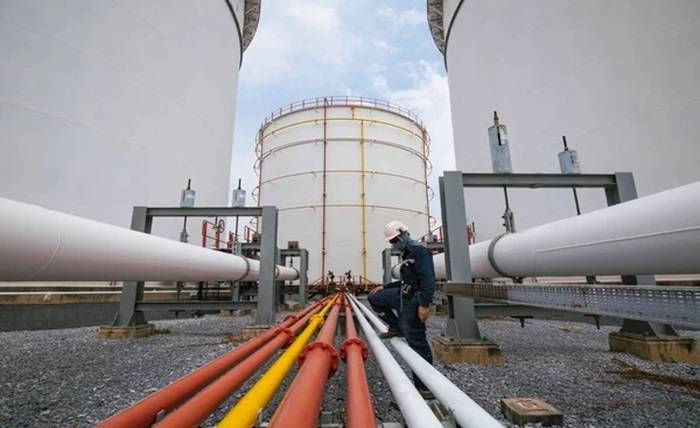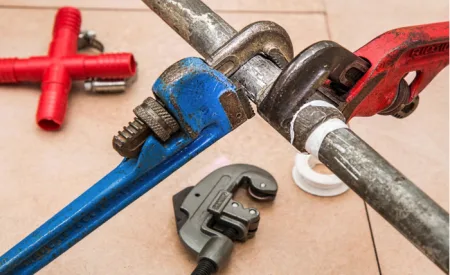The underground infrastructure that supports our daily lives, including water supply, sewage systems, and gas pipelines, is often out of sight and out of mind. However, as these pipelines age, they face various challenges like corrosion, leaks, and deterioration. When addressing these issues, pipeline rehabilitation becomes a critical consideration. This also calls for the need to hire a proficient internal tank and pipeline inspection services provider.
In this blog, we explore the techniques of pipeline rehabilitation, weighing the pros and cons of repair, replacement, and rehabilitation.
Understanding Pipeline Rehabilitation
Maintaining the integrity of pipelines is essential for the uninterrupted flow of vital resources and preventing environmental hazards.
Pipeline rehabilitation encompasses a range of techniques aimed at restoring or enhancing the functionality of existing pipelines. The choice between repair, replacement, or rehabilitation depends on factors like the extent of damage, budget constraints, and the desired lifespan of the pipeline.
- Pipeline Repair: Quick Fixes for Immediate Concerns
Repairs are often employed for localized issues that pose immediate threats, such as leaks or minor damages. Pipeline repairs are generally more budget-friendly than full-scale replacements. Besides this, they are quicker to execute, causing less disruption to services.
However, there are some downsides of pipeline repairs.
Repairs may be a temporary fix, requiring more frequent interventions. Depending on the extent of damage, repaired sections may have a limited lifespan.
When to Choose Repair
Choose repairs for isolated issues where the overall integrity of the pipeline is still intact, and a quick and cost-effective solution is essential.
- Pipeline Replacement
Pipeline replacement involves removing the existing pipeline and installing an entirely new system. Replacement of pipeline provides a new, durable pipeline with an extended lifespan. It also allows for the incorporation of the latest technologies and materials.
However, pipeline replacement projects tend to be more expensive than repairs or rehabilitation. This process requires extensive excavation and can disrupt services for an extended period.
When to Choose:
Tank storage facility owners and operators can opt for replacement when the pipeline has extensive damage, is outdated, or if a significantly extended lifespan is required.
- Pipeline Rehabilitation
Rehabilitation aims to enhance the performance of existing pipelines without the need for complete replacement. Since the pipelines are not replaced altogether, this option is generally more economical than a complete replacement. Since the old or existing pipeline assets in working condition are reused, there is a low impact on the environment. Rehabilitations often involve trenchless technologies, reducing the need for extensive excavation.
However, there are some limitations. Pipeline rehabilitation is not suitable for pipelines with severe structural damage or those nearing the end of their lifespan. Moreover, Rehabilitation techniques may require specialized expertise and equipment.
When to Choose:
It’s best to consider rehabilitation for pipelines if there is are some localized issues or the pipeline has sustained moderate damage. One can also opt for pipeline rehabilitation when cost-effectiveness and minimal disruption are priorities of the facility operator.
Common Pipeline Rehabilitation Techniques
- Trenchless Technologies:
Trenchless technologies performed by experienced tank inspection company minimize the need for extensive excavation, reducing the environmental impact and disruption to surrounding areas.
- Cured-in-Place Pipe (CIPP): A liner saturated with resin is inserted into the existing pipe and cured, creating a new, durable lining.
- Pipe Bursting: A new pipe is pulled through the existing one, simultaneously breaking the old pipe and replacing it.
- Chemical Grouting:
Chemical grouting involves injecting grout into the soil surrounding the pipeline to stabilize and seal the area.
- Permeation Grouting:Seals leaks by injecting low-viscosity grout, improving the soil structure and reducing water infiltration.
- Sliplining:
Sliplining involves inserting a smaller diameter pipe into the existing one, creating a new interior surface.
- Insertion of New Pipe:A smaller pipe is pulled or pushed through the existing one, providing structural support and addressing leaks.
Things to Consider When Choosing the Best Option
- Pipeline Condition:
The extent of damage and the overall condition of the pipeline play a crucial role in determining the most suitable rehabilitation approach.
- Budget Constraints:
Financial considerations often guide the decision-making process, balancing the need for cost-effectiveness with the desired outcome.
- Environmental Impact:
Minimizing disruption to the environment and surrounding areas is essential in choosing the right rehabilitation technique.
- Lifespan Requirements:
Understanding the expected lifespan of the rehabilitated pipeline influences the decision between repair, replacement, or rehabilitation.
When it comes to pipeline rehabilitation, there’s no one-size-fits-all solution. The choice between repair, replacement, or rehabilitation hinges on a careful evaluation of factors like the extent of damage, budget constraints, and environmental considerations. Whether opting for quick repairs, a complete replacement, or the middle ground of rehabilitation, the goal remains to ensure the continued functionality and longevity of critical underground infrastructure. By striking the right balance and employing the most suitable techniques, pipeline rehabilitation becomes a necessity and a strategic investment in sustaining our essential networks for the future.



